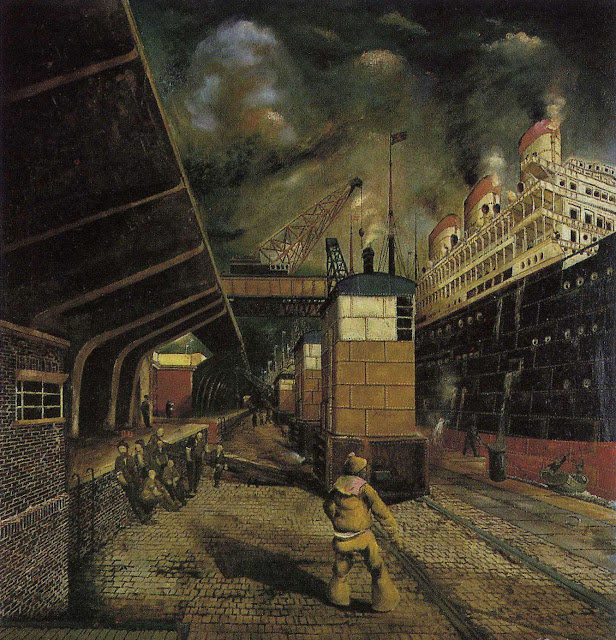Since art historians are people of ideas, delighting in finding conceptual, seemingly beautiful abstract constructs they irresistibly are attracted to the kind of art that begs for exegesis.
The temptation is just too strong and who would blame them for yielding into the impressive acrobatics of flexible ideas. Modern art is perfect in this one instant- it screams for explanation. And art historians, with vigor worthy of a better cause jumped at the chance to knit and weave the most astonishing web of absurd theories, explanations, and commentaries encasing each puny piece of modern art in protective cocoon against common sense reactions. Outcome of this tendency is powerfully reflected in books on XX century art and in museums across the country. Modern art is therefore presented as the shimmering efflorescence, the precious bloom of artistic effort of that century, all due to the tendentious, cross-eyed hatred of both beauty and reality.
Yet, another art history should be written of that period, where dilettantish smears and splatters would be wholly omitted, while artists of true and lasting merit would take their rightful recognition. It will take a good while, not because the obvious fraud is not obvious, but because the powers behind the sham of modern art are very, very strong.
In the first decades of the XX century American painting faced a dramatic fork in the road of artistic choices. Painters could have joined realism or follow the newly exported European modern art. American realism had roughly two thematic realms of inspiration; urban and “regional”, meaning rural.
All of the painters of American realism, while rejecting cubism and abstraction had taken some elements of European modern art. Some have intensified their color and light along the French examples of impressionism, others “loosened” their brushstrokes which no longer were hidden, but flaunted them as some misguided virtuosity of post-impressionism, also from France. With those influences they turn toward American scene and brought us large harvest of fresh, not painted before images of local life.
Painters whose artistic origins were rooted in XIX century realism were creating splendid works often for another quarter of a century. John Singer Sargent painted a magnificent mural commemorating solders of the First World War.
John Singer Sargent "Gas"
William Paxton is another painter whose realism has roots in XIX century and painted well into mid-twentieth century. There is very alluring serenity in his interiors filled with coloristic delight no less admirable than in paintings of great Jan Vermeer.
William McGregor Paxton
One of the most influential painters of the first quarter of the century was Robert Henri. His pronouncements concerning painting sound appealing, because he calls for learning to “see” and for expressing “life”.
Robert Henri "Cumulus"
At a sober distance one has to ask if hasty, excessively sketchy lathering of sloshy paint is really effective way of bringing “life” into a painting. It certainly gives permanent sense of something provisional, done in inexplicably great haste, rushing to sign it before paint has been turned into the flesh of objects it is depicting. Being a charismatic figure he instilled in a long row of very talented painters the method of agitated, provisional, smeary manic brushing, as if they were whipping ,flogging their canvases with thick goo. If his credo was “seeing” than surely no one can see outside of their canvases all those deposits of raw paint. In humility, appropriate to the devotional task of painting the world, all silly gimmicks should be put aside and painting has to be understood to be an image appearing behind a surface of a mirror.
Here are some choice examples of the works of his circle.
George Luks "Paddy Flanagan"
John Sloan Drying Hair"
George Bellows "The Circus"
Everett Shinn
. Reginal Marsh
Instead of leaving some provincial surroundings and moving to New York to paint city life or join modernism and propel the wheels of recognition, one could defiantly stay put and make art of that world.
It became known as “regionalism” and they painted Mid-West..Two convictions these Midwesterners had in common: they chose to paint land and life of their own origins and they rejected modernism, not because they were traditionalists but because they viewed modern art as empty formalism.
The best, by far representative of the regionalism was Grant Wood of Iowa.
His portraits are much more successful than landscapes. There is far too much toy-like look of buildings and trees, the fields have neatness only hairdresser can achieve, like backgrounds of animated movies. Excessive stylization was somehow in the air of the epoch and art of regionalists would have been much better had it resisted the temptation.
Grant Wood
John Steuart Curry was a regionalist from Kansas.
John Steuart Curry
Thomas Hart Benton from Missouri was very prolific artist with an instantly recognizable style. The Mexican muralists and Benton shared the taste for highly stylized forms but artistically he was never as good as Diego Rivera. His compositions are usually chaotically atectonic ,his figures lack the degree of observation and study of actual human figure to make them compelling rather than contorted .Still, with those shortcomings his huge body of work shows great inventiveness of subject matter and admirable ability of poeticizing ordinary life.
Thomas Hart Benton
End of Part One.


























































